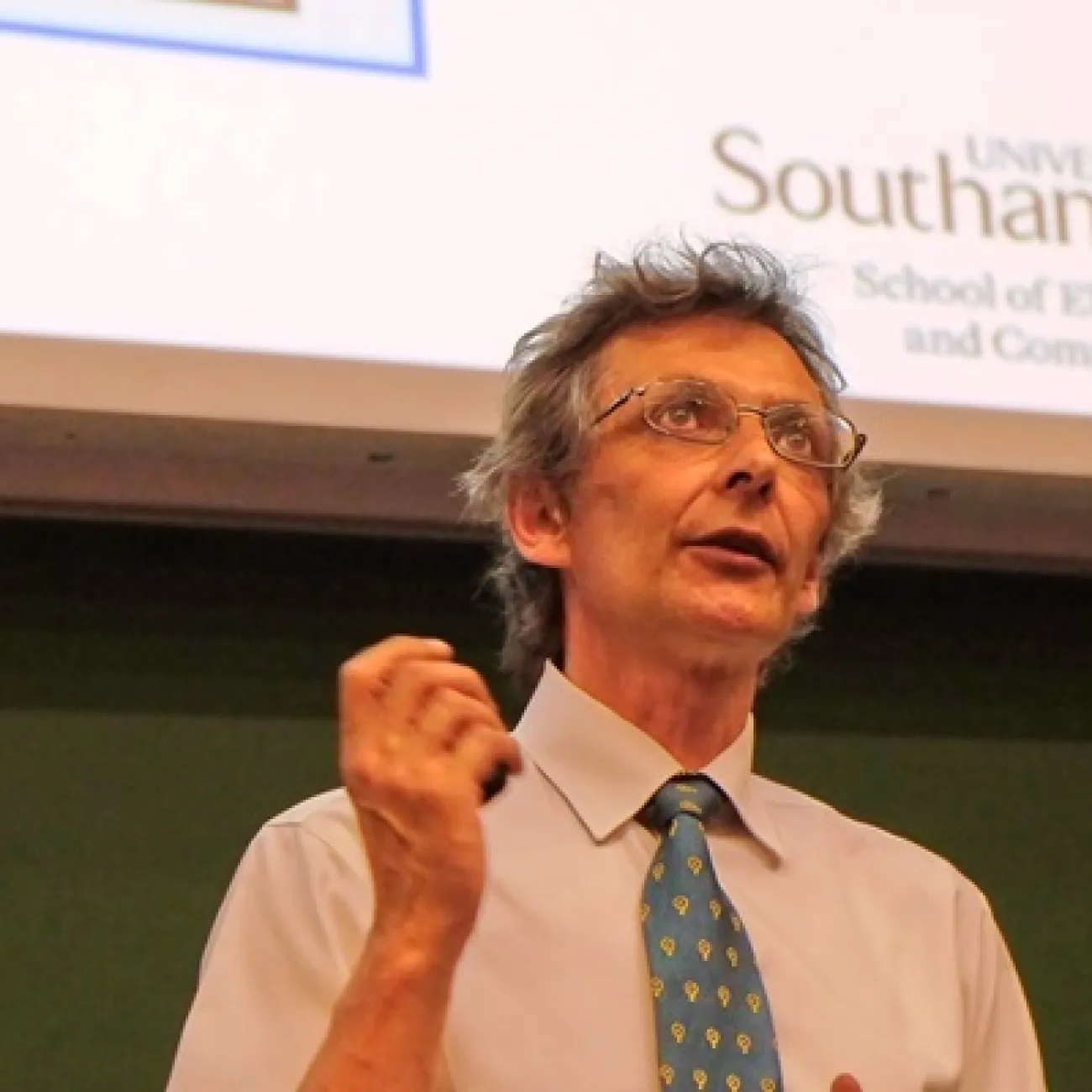Research
Research interests
- My research interests are in image processing and computer vision.
- I have helped to develop new techniques for static and moving shape extraction (both parametric and non-parametric) which have found application in automatic face and automatic gait recognition and in medical image analysis.
Current research
Our research is driven by society’s need to identify people from images of them. Our main research has been to pioneer:
1. gait as a biometric (to recognise subjects by the way they walk);
2. the ear as a biometric (for recognition by the ears’ shape and structure);
3. soft biometrics for identification (to recognise people from verbal descriptions of their body, face and or clothing).
Gait was uniquely pioneered at Southampton, as was soft biometrics for idemtification. For Ears we were not the first paper, but we were the first journal paper [325].
For gait we wrote the first paper (AVBPA 1997) [254] , first journal paper [313], co-authored the first book (Springer 2005) [5], the first survey of gait biometrics (Proc. of the IEEE) [340], a book chapter in the first book on biometrics (Springer 1997) [14], the first workshop/ sessions on gait biometrics; the first journal special edition on gait (IEEE SMC(B) 2010), the first keynote on gait biometrics (IEEE AFG 2004, Korea). These factors have been repeated (largely) for ear and for soft biometrics. I am currently co-authoring the first book on soft biometrics, we wrote the first paper (IEEE BTAS 2008) [153], first journal paper [313], co-authoring the first book (Wiley, under contract with A. Ross), the first survey of soft biometrics (Pattern Recog. Lett) [365], a first book chapter [24], the first workshop/ sessions on gait biometrics (ECCV); the first keynote on soft biometrics for identification (IEEE AVSS 2013).
We are currently working on mechanisms that seek to cross the semantic gap: to learn human descriptions from computer vision features and conversely to learn image features from human descriptions. In this way we shall seek to retrieve subjects from image databases by using fine-grained human attributes. We anticipate greater practical capability as well as performance advantage in this new approach. As such, we have recently described our work on fusion of soft biometrics in a psychology journal [372], for it leads not only to identification and search for subjects in video material, but also to new insight into eyewitness procedures, which are of continuing interest.
In parallel work, we are developing a new approach to analyse acceleration in image sequences [221]. I noticed that most approaches to analysing velocity actually subsume many types of motion. By separating out acceleration we have found new capability e.g. rotational acceleration to find a walking subject’s feet, as well as new capability to detect violent actions since acceleration is innate to such acts.
Our most recent work has aimed to capitalise on and to build on our new approaches to recognising people using human descriptions [361, 362, 365] : soft biometrics for identification. In the past three years we have described how we can recognise subjects by human descriptions (attributes) of their body [206, 212, 216, 218, 219,368] of their face [217, 220]and of their clothing [207, 209, 212, 369] . We are the first to achieve this for the human body and for clothing; the contemporary work in face recognition uses categorical attributes, which do not have the power of our new comparative approaches. In our work in the previous three years we have now used crowdsourcing to generate human descriptions, allowing for much greater and more international labels allowing greater study of their perspicacity.
